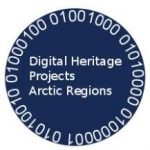The analysis of all three data sets involved the collation of information gathered through
the various collection methods to provide overall conclusions to four main questions:
1. Identifying the extent and objectives of digital return projects in the Arctic.
2. To characterise the digital return methodologies employed by different digital return
projects.
3. How digital return projects are accessed in the Arctic.
4. What are the issues and challenges facing digital return projects in the Arctic?
Key Messages
Here are the 12 key messages that were synthesised from all the research projects and
accompanying literature, surveys and interviews:
1. This knowledge synthesis report provides the first bibliometric profile and systematic
review of digital heritage projects and the concept of digital return in the North
American and European Arctic.
2. Canada is a leader among circumpolar nations in initiating and developing digital
return projects in Indigenous communities. Within Canada, there is an almost equal
representation of projects between Nunavut, Northwest Territories, and the Yukon,
with fewer projects occurring in Nunavik and Nunatsiavut. The majority of
academically oriented projects are situated in Nunavut.
3. Most projects emphasise collecting local knowledge that is environmentally focused,
and are primarily concerned with heritage within the last 50 years. Such projects tend
to be led by academic and government individuals/groups. Comparatively few projects
focus on the digital repatriation of archaeological and ethnographic collections, even
though a case study of grass roots heritage organisations identify this as an area of high
priority.
4. Cyberinfrastructure issues in most arctic communities have created a “digital divide”
that severely limits the use of digital technologies for preserving, archiving, and
disseminating information about tangible and intangible heritage. This is not being
adequately addressed by most projects and funding sources.
5. The consequences of placing cultural objects and knowledge online and in open source
contexts where Indigenous communities have little or no control over how digitalassets are accessed, circulated, and used is not being adequately addressed by the
digital return projects examined in this report. As a result, different kinds of “open
access” will need to be negotiated.
6. Social media platforms and file sharing sites are used by community-led projects to
disseminate most heritage content. In contrast, projects led by academic and
government groups utilise websites, electronic atlases, and online databases to manage
and distribute heritage data.
7. Little research has been done on how the process of digitisation affects the values and
meanings associated with cultural objects in the eyes of source communities.
Furthermore, digitisation significantly alters the concept of “repatriation” and the
practices that surround it. For example, is it actually possible to return something that
can be replicated over and over again, or when one cannot be certain what version of
the object is being returned?
8. There is an urgent need to develop obsolescence management practices to guard
against the consequences that rapid technological change may have in rendering digital
return platforms inoperable to Indigenous stakeholders.
9. Digital return initiatives that are community-led are often youth focused. A side benefit
of this is that they can provide important opportunities for training and skills
development in digital technology. This will have positive economic impacts in
northern communities where youth unemployment is a serious issue.
10. Digital return can be viewed as a disruptive technology because it disrupts established
institutional models/networks for archiving, accessing, and interpreting objects and
cultural knowledge.
11. At the same time, digital return is a disruptive technology that has the potential to alter
Indigenous networks that support how objects and cultural knowledge are accessed
and circulated.
12. Partnerships between industry and Indigenous communities are rare among the digital
return projects reviewed in this study. Recent successful collaborations in Alaska
between Cook Inlet Tribal Council and E-Line Media, coupled with the intense interest
in digital technology among Inuit youth, suggest that similar collaborations in the
Canadian Arctic would be equally successful.
To look at the full analysis, please refer to the final report provided to SSHRCC.

